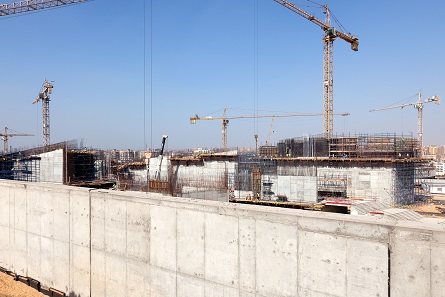by Kate Fitz Gibbon
October 6, 2016 – Egypt is spending over $1 billion to build a gargantuan Grand Egyptian Museum. At the same time, Egypt’s Ministry of Antiquities fails to enforce security at storehouses and sites, permits looters and commercial developers to destroy and build over archeological sites, and delegates restoration work to untrained local companies.
When the Grand Egyptian Museum finally opens in 2018, seven years after its original completion date, the 93,000 square meter complex will hold 100,000 items, over 5,500 from the tomb of Tutankhamun alone. The museum is located conveniently near the tourist traffic of the pyramids, but will be less accessible to the Egyptian public than the centrally located Egyptian Museum in Tahrir Square in Cairo. The Egyptian government is relying on the grandiose new museum to revitalize Egyptian tourism, which has dropped steadily since the uprisings of the Arab Spring, and shows no sign of reviving under the repressive regime of President Abdel Fattah El Sisi.
Building the Grand Egyptian Museum. Photo: Roland Unger 2015 / Wikipedia.
The museum project has given cover to significant lapses in the protection the Egyptian government provides to monuments and sites around the country. The Egyptian Heritage Task Force, a group highly critical of government failures to protect archaeological and historic sites within Egypt, is the original source for a recent LiveScience article on the abuse of children who are forced to loot. The LiveScience article blames international collectors for a spurt in looting, and is replete with so-called statistical evidence based on misapplied US Customs data (For similarly flawed claims, see 2015’s Top 5 Questionable Claims on ISIS and Syrian Antiquities: To Hopes for More Accuracy and Less Hype in 2016.)
In fact, as the Egyptian Heritage Task Force has pointed out repeatedly, heritage loss in Egypt is the result of government’s blatant corruption and its indifference to the fates of monuments, archaeological resources, and even its children. If members of the Egyptian Heritage Task Force photograph children working at illicit excavations in broad daylight just outside Cairo, one has to ask – where are the police?
In just one month of 2016, CCP noted four flagrant abuses traceable to the Ministry of Antiquities, starting from the January 23 announcement that Egyptian Museum employees were being referred to a disciplinary tribunal for “reckless actions” damaging one of the world’s most famous antiquities, the golden mask of Tutankhamun.
On February 2, in Baron Empaim Palace Restoration Allegations Against Ministry, CCP chronicled Egyptian press allegations that the ministry completely mismanaged restoration an historic monument by giving the job to a concrete company – even after the head of the engineering syndicate told media that he had sent the minister an official letter asking him to be more cautious in restoring such a great palace. The ministry later denied everything and said it was merely “consulting” with the concrete company.
Then, on February 14, Viral Video of Pyramid Stone Sellers described an expose by young videographic journalists about tour guides who sell pieces of the pyramids outside Cairo. The immediate response of the government was to arrest… the journalists.
Again, on February 15, in 157 Items Missing from Saqqara Storage, Lawyer Demands Ministry Officials be Banned from Travel, CCP wrote about the cover-up of a major theft from the Saqqara antiquities warehouse by ministry insiders.
And this is all within a single month.
Before repeating the unsupported claims of activists who support the nationalist agenda of the Egyptian government, more serious investigative journalists would do well to consider what stories like the LiveScience article really say: that Egypt’s government cares more about grandiose modern monuments than about protecting archaeological sites – or their own people. Serious journalists should also undertake sustainable, independent analyses of the size of the antiquities trade – and puncture the phony claims that are parroted endlessly. An Egyptian request for US import restrictions is on the horizon. Real facts are needed to justify trade barriers that will do little or nothing to protect Egypt’s cultural heritage.
This article appeared first on August 30, 2016 on the Committee for Cultural Policy website.
In 2014 Wafaa El Saddik was the director of the Egyptian Museum in Cairo. Disappointed of the situation in the archaeological and cultural sector in her country she gives detailed insight in a book we presented in CoinsWeekly.





